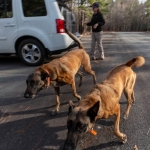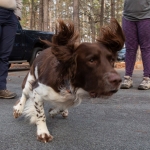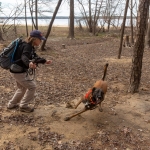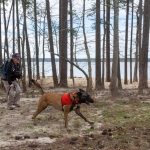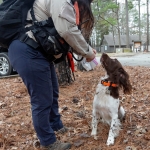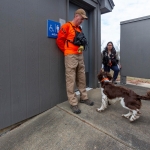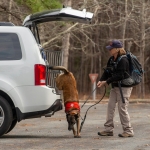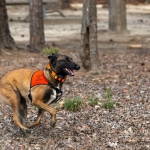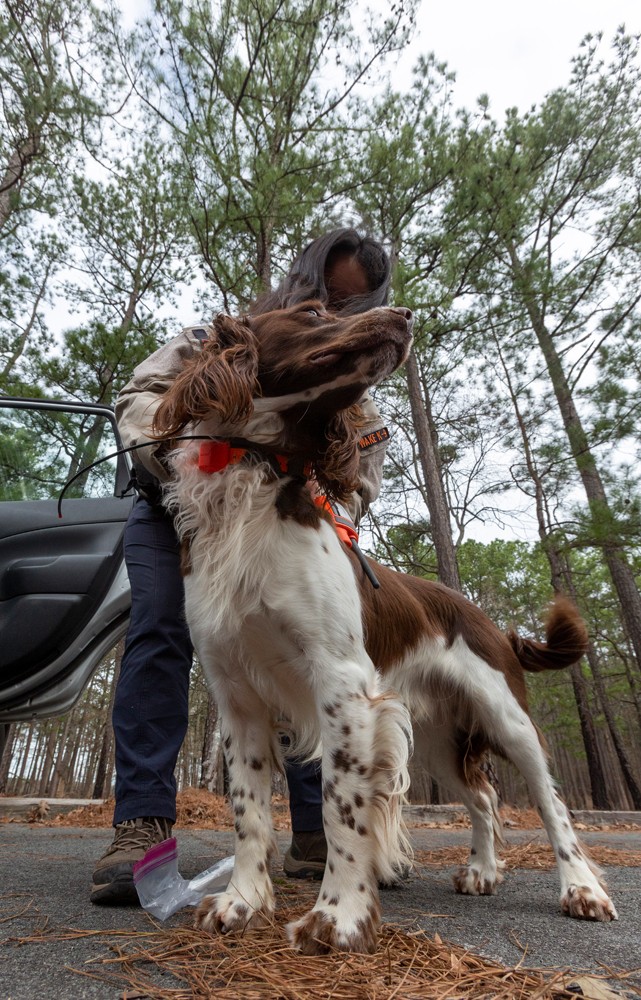
Search-and-rescue springer spaniel Jet prepares for a morning of training with her owner Audrey Low. “That dog has one speed: wide open,” says volunteer Kevin Bean.
Most dogs spend their days lounging on the couch or in a sunny spot on the grass. For a select few, their job goes beyond sleeping and eating — like search-and-rescue dogs. In Wake County, these dogs are an important part of the Wake Canine Search and Rescue team, or WCSAR.
WCSAR, an all-volunteer, nonprofit organization, began in 1995 to help emergency responders find missing people.
“We search as a unit,” said Catherine Louis, a certified dog handler. “It’s not all about the dogs. We do whatever. We go to the incident, and if they want us to knock on doors, we knock on doors.”
“Until ruled otherwise, it could be a criminal case, so that’s why the police always take the lead,” said Kevin Bean, a longtime volunteer and a Cary firefighter. “However, the police don’t usually run searches. Usually it’s the local emergency management that runs the searches.”
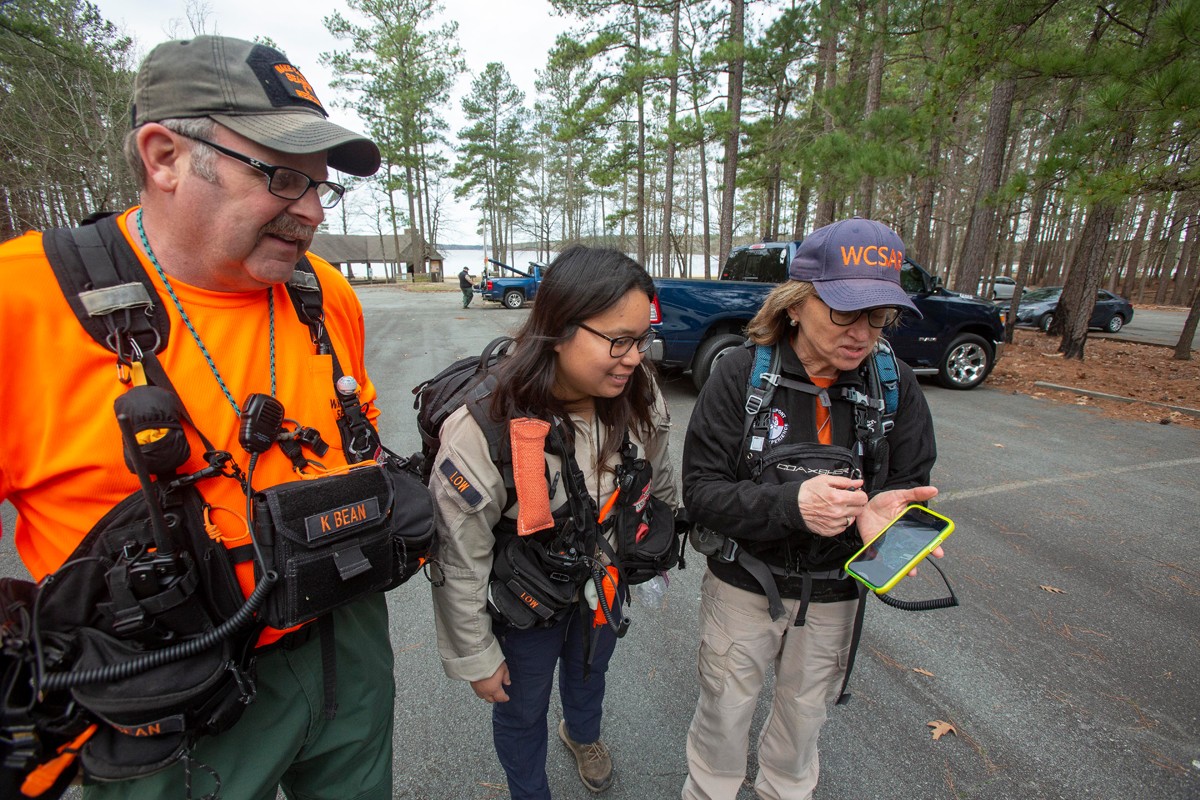
Wake Canine Search and Rescue volunteers study a GPS-tracking map that shows where the dogs are in the training space at Falls Lake. From left: Kevin Bean, Audrey Low and Catherine Louis.
The search-and-rescue team consists of 20 human members — ranging from physician’s assistants and drug researchers to firefighters — and three scent dogs.
“When I first joined, I expected a bunch of former cops or something, but it was all kinds of different backgrounds,” said Tara Ferrell, who joined WCSAR in January as a volunteer.
She is still learning what it takes to train the dogs as well as the complex procedure to find missing persons.
Louis owns two search-and-rescue Belgian malinois, Jadviga – who goes by Viga – and Khoja. She trained with her dogs for two years before she was ready to take the National Association for Search and Rescue’s certification test, one of two state-mandated exams for people who want to be part of the search-and-rescue process. The test covers everything from how the team operates to skills like first aid, navigation and survival.
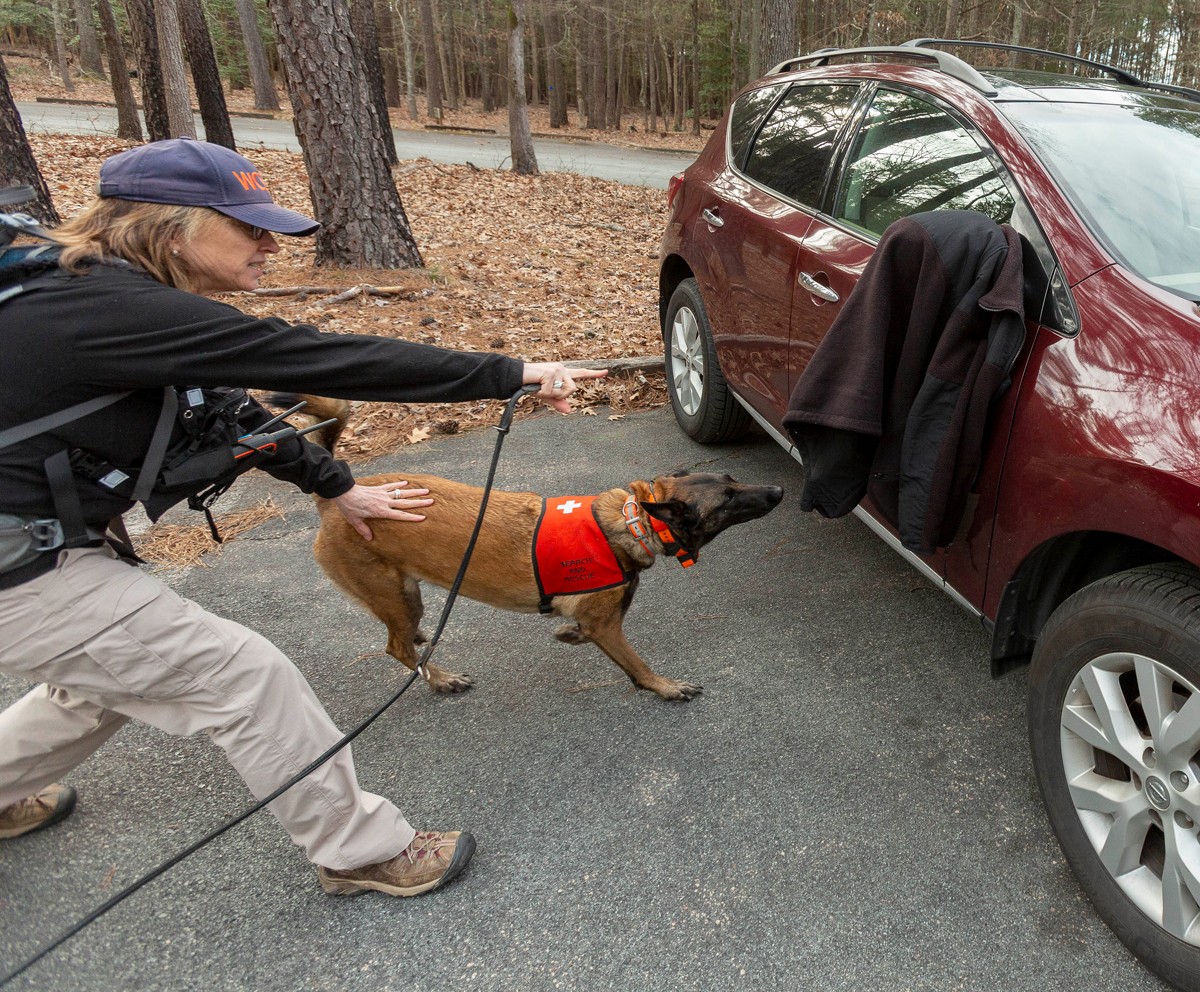
Trainer Catherine Louis shows her dog, Jadviga, the jacket of another volunteer, which is being used as a scent article. In a missing persons case, scent articles can include anything from clothing to the person’s car.
“The dogs come out of the womb knowing how to scent-discriminate,” Louis said. “They already know how to do it. It’s just incorporating the human element in it.”
A dog’s sense of smell is tens of thousands of times stronger than humans, experts say. Viga has found Bean using a frozen scent article that was over two years old.
“This parking lot could be full of cars, and if we know we are looking for the occupant of that car, we can collect a scent article from that vehicle, and our dogs will find her,” Bean said. “We could be standing in a group, and the dogs would come up to all of us, and they would indicate on her.”
Search-and-rescue dogs begin training when they are about 14 weeks old. Owners typically hide a handkerchief or other objects for the pup to find. The game gets them accustomed to using their sense of smell in ways beyond that of a typical pet dog.
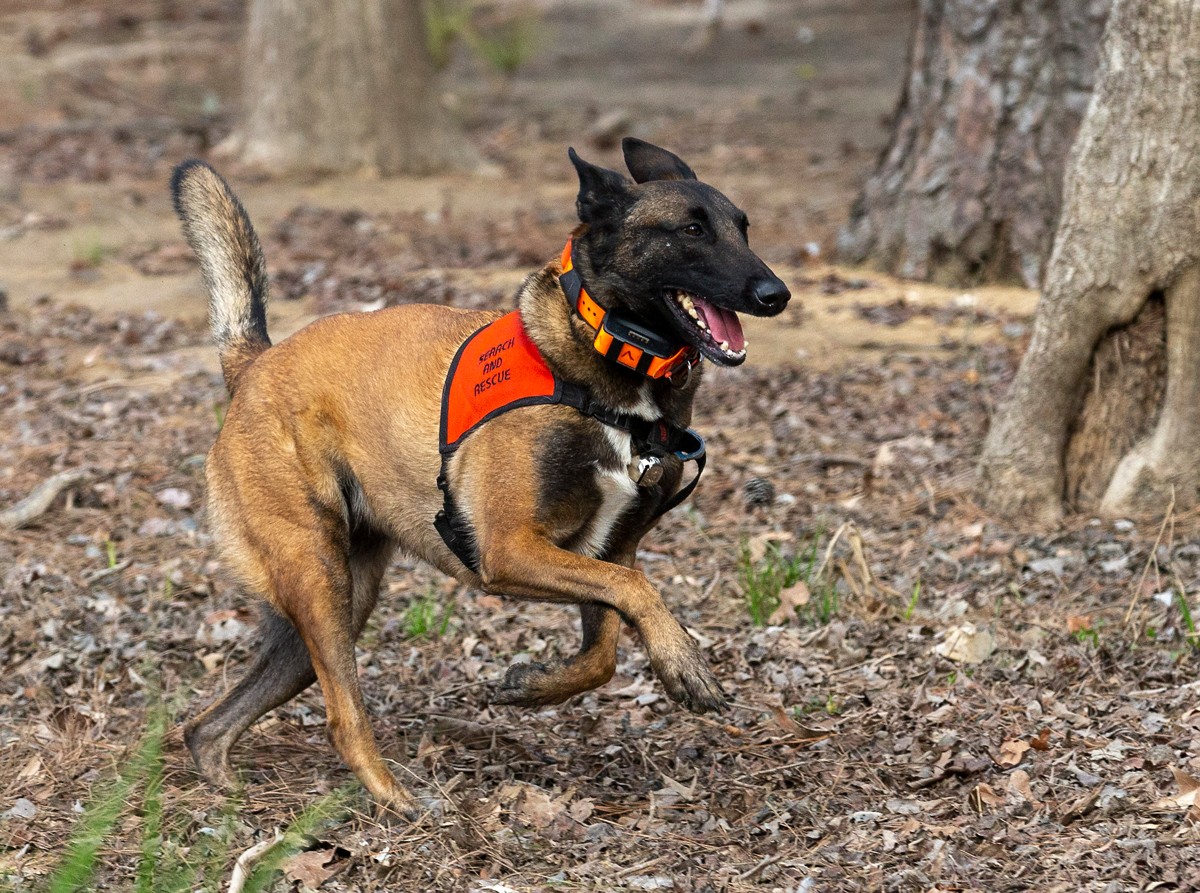
Once Jadviga picks up the scent from the jacket, she takes off into the woods to look for the hiding volunteer.
Once they can locate objects by smell and know basic skills like sit, stay and fetch, dogs are trained in the field, typically at parks or large farms. Twice-a-month training sessions last about two hours. First, the dogs get to run around to burn off some steam and then, are placed back in their crates. Then the humans get to work.
“The state parks are awesome,” Bean said. “We train here at Falls Lake and at Umstead. We’re the only ones here. They allow us to train in areas that are closed, because people go missing in parks.”
The operational team gathers scents from a volunteer, borrowing clothing or rubbing gauze along the person’s chest to pick up the scent. The volunteer then hides, typically within an area of 40 to 100 acres.
The dogs are let out of their crates and put into their uniform — a GPS tracker, vest and jingle bell.
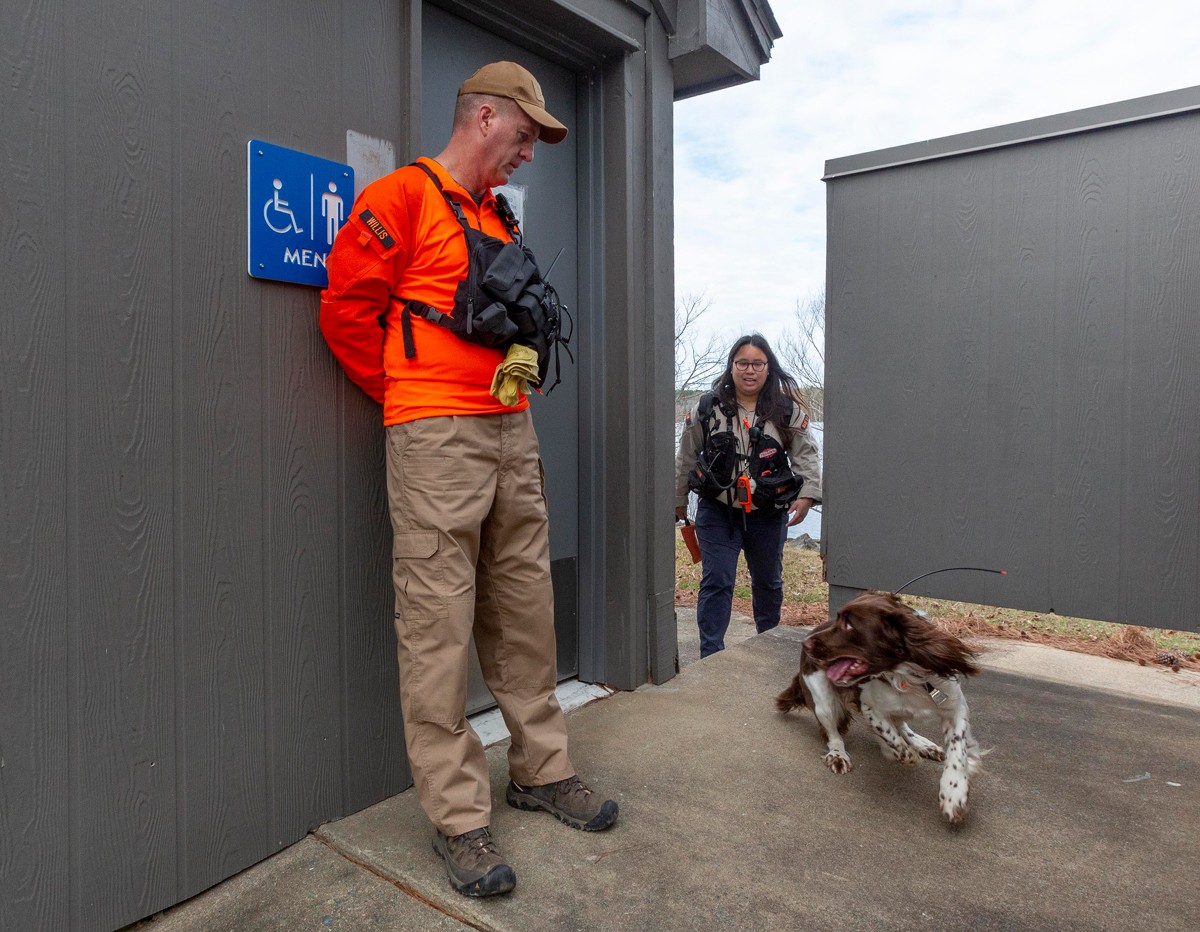
After tracking Doug Willis to his hiding place, Jet rounds the corner to find the waiting volunteer. After the successful find, the dog is rewarded with play time with her owner, Audrey Low.
“The military has a saying, ‘train as you fight,’ so we try to train as realistically as possible,” said Scott Gooch, a physician’s assistant and member of WCSAR.
“When (Viga’s) dressed, she knows she’s working,” Bean said.
Once suited up, the dogs are given their scent to find. Within seconds of sniffing, they’re off to find the human it belongs to.
“You have to learn how to watch the body, to know if they’re just scanning for scents, or they’ve actually made a find,” Louis said.
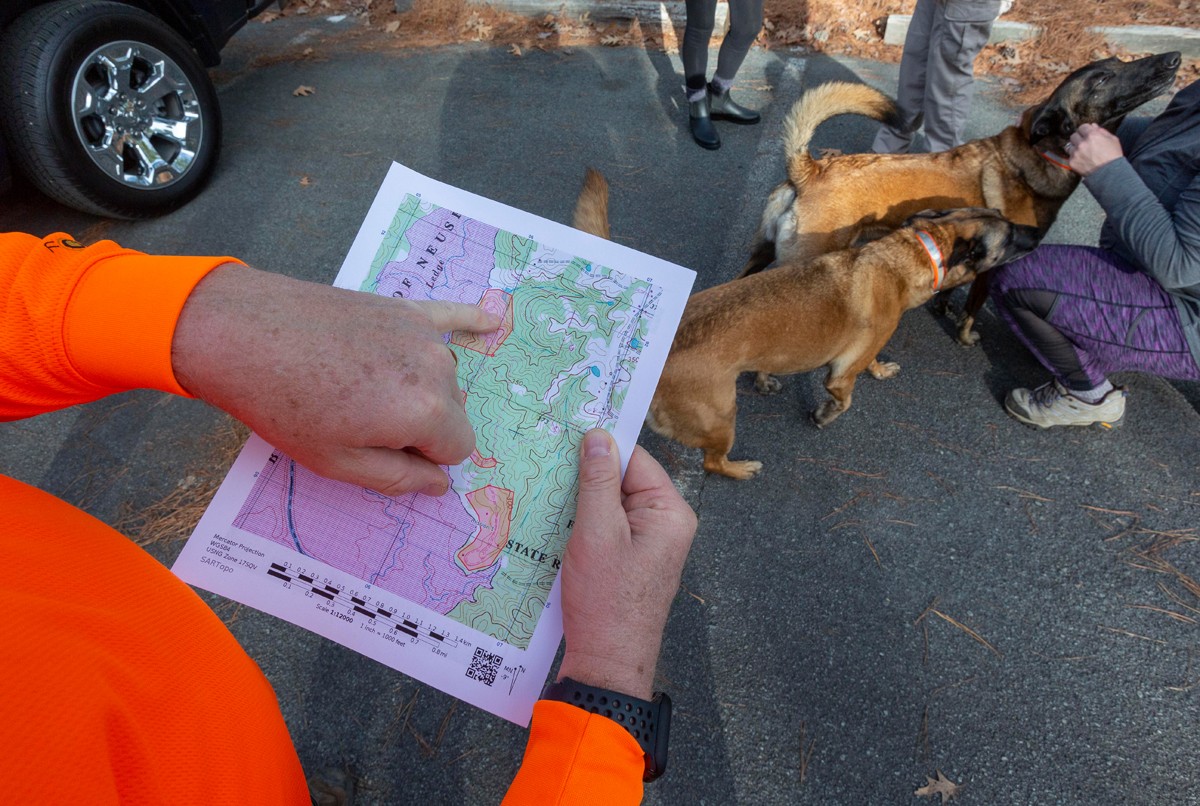
In addition to GPS-tracking maps on their phones, team members carry paper maps in their backpacks in case their phone batteries die or lose signal.
As the dogs get closer to their find, they return to get their owner’s attention. In training, Louis will play dumb and face her body away from where she knows the volunteer is hiding, signaling the dog to show her where the person is. The dog faces back toward the scent, takes off for the hiding volunteer and comes back once again to Louis.
“Show me!” she shouts, and the dog takes off again for the final pursuit.
Once the dogs make a find, whether in training or in a criminal case, the team celebrates with positive reinforcement, be it cut-up hot dogs or extra play time.
The dogs are then brought back to the team, and their uniform is taken off, signaling the end of the session.
For Louis and Bean, training is taken seriously, mimicking a real case. It’s a different story for the dogs.
“It’s all a big game to them,” Bean said.
- Hive Mind
- Do the Hustle
- Takeout, Delivery & Crossed Fingers
- Liquid Assets: Smoothsicle from Funguys Brewing
- Smell, Seek, Find
- Pet Parade: Our Awesome Animals
- Small Business Spotlight: Woof Gang Bakery
- Nonprofit Spotlight: Best Friend Pet Adoption
- From the Editor: Fleeing from the Virus
- Garden Adventurer: The Constant Color of Sun Coleuses



